Clancy Tucker's Blog, page 142
August 31, 2018
1 September 2018 - MOVING PICTURES

MOVING PICTURES
G'day folks,
It's been a while, so here are some more of those enchanting moving pictures.


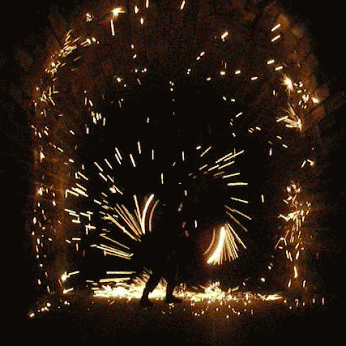




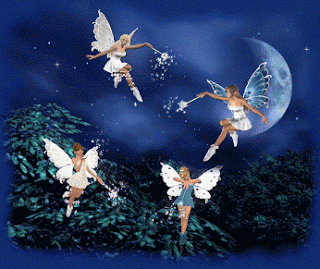





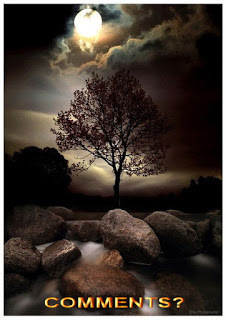
Clancy's comment: That's one smart rabbit, eh? And, how they make that cat jump from a plane is beyond me.
I'm ...


Published on August 31, 2018 15:33
August 30, 2018
31 August 2018 - ALAN FELYK - GUEST AUTHOR
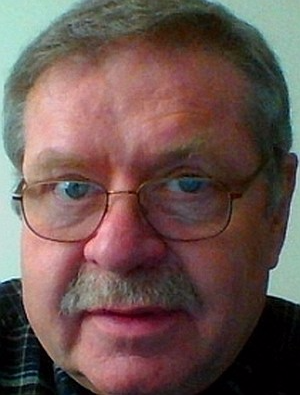
ALAN FELYK - GUEST AUTHOR -
G'day folks,
Today, I interview another top author from the USA with some very interesting responses to my questions.
Welcome, Alan ...
1. TELL US A LITTLE ABOUT YOURSELF AND YOUR WRITING JOURNEY.
I grew up on a small farm in Canon City, Colorado. I got interested in books in the second or third grade. Through the library’s summer reading program, I read all the Wizard of Oz and Lone Ranger novels. A strange mix to be sure.
But I found one of my genres a few years later when The Twilight Zone appeared on TV. I was so intrigued by the imagination of that show. And I became an absolute sucker for twist endings.
And in high school, I was so swept up by Rowan & Martin’s Laugh-In on TV that I knew I would be writing humor in some form.
I wrote a lot of science fiction short stories during my junior high school years. And I started writing humorous essays in high school. In college, I wrote both in the creative writing classes that I took. But I never combined the two genres until I wrote Damaged Beyond All Recognition.
2. WHEN AND HOW DID YOU BECOME A WRITER?
I think the first time I got paid for writing something was in college. I got a part-time job with the National Oceanic and Atmospheric Administration’s public information office. I wrote national press releases about the work that the agency was doing.
3. WHAT TYPE OF PREPARATION DO YOU DO FOR A MANUSCRIPT? DO YOU PLAN EVERYTHING FIRST OR JUST SHOOT FROM THE HIP?
I tried outlining Damaged Beyond All Recognition, and that proved to be disastrous. The plan was 18 pages long, single-spaced. I showed it to a friend, and he assessed that it was “too Hollywood.” I thought about that and concluded that he was right.
About that time, I saw a quote from author E.L. Doctorow. He said “Writing is like driving at night in the fog. You can only see as far as your headlights, but you can make the whole trip that way.” And suddenly, it all made sense. I rewrote book’s beginning and told the reader how the book would end. And then I wrote the ending. But I had no idea how to connect it all together. So, every night was an adventure for me. What’s going to happen next in the story? It kept me writing until I got to the end.
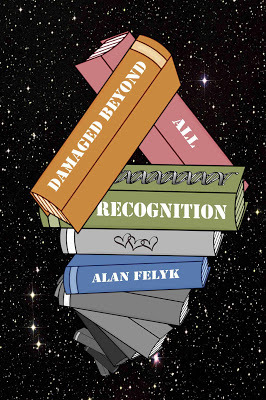
4. WHAT DO YOU ENJOY MOST ABOUT BEING A WRITER?
It’s coming up with a unique story. Something from deep within my imagination that makes the reader ask, “How the hell did he come up with that?” To me, that ensures that the story will remain with people forever.
5. WHAT IS THE HARDEST THING ABOUT BEING A WRITER?
Trusting yourself. You must have confidence in your abilities. That what you’re doing will be appreciated by most of the people who run across your novel and read it. And that’s difficult because writers work in a vacuum.
6. WHAT WERE YOU IN A PAST LIFE, BEFORE YOU BECAME A WRITER?
Good question. I hope I was a musician, someone wrote meaningful lyrics for songs. Lyrics are poems set to music.
7. WHAT IS YOUR GREATEST WRITING ACHIEVEMENT?
It’s undoubtedly Damaged Beyond All Recognition. I knew I was onto something special after I started writing it. That it would capture the feel of a Kurt Vonnegut novel.
8. WHAT ARE YOU WORKING ON AT THE MOMENT?
I’m working on the sequel. It’s going to be titled Damaged And No Longer Under Warranty. All the main characters from the first novel will be in this one, and that makes writing it so much easier. But I’m trying to write the book so that it can stand alone and make sense to the readers who haven’t read the first one.
9. WHAT INSPIRES YOU?
Music is my biggest inspiration. I’m always listening to music when I write. In fact, I tend to cue up songs that relate to the scenes I’m working on. Kind of a soundtrack that helps set the mood I’m trying to capture.
10. WHAT GENRE DO YOU WRITE?
It’s a blend of science fiction, romance, and humor. I originally intended to just write humorous science fiction, but the romance part just seeped into things.
11. DO YOU HAVE ANY TIPS FOR NEW WRITERS?
It’s a cliché, but you can’t be a writer if you don’t write. Write at least one sentence each day. Sure, it will take some time to finish a novel at that rate, but eventually, you will complete it.
I think “writer” is a mislabel if you’re a fiction writer. You should be a storyteller first and foremost. Your job isn’t to include all the words you can find in a thesaurus. Don’t write two-page descriptions of sunrises and sunsets. Be direct and straightforward. As Elmore Leonard said, you should leave all the parts that readers skip over.
And, if you don’t love your story, you’ll probably never finish your book. And even if you do, your readers won’t like it, either. They can tell if you’re all into what you’ve written.
12. DO YOU SUFFER FROM WRITER’S BLOCK?
No. I usually spend the day thinking about the scenes I’m going to write that night. I think about them while responding to email, while I’m at the gym, while I’m at the store. Don’t wait to do the rough planning when you sit down to write. You’ll tend to struggle if you do.
I think it’s especially important to plan your scenes throughout the day or evening depending on your writing schedule.
13. DO YOU HAVE A PREFERRED WRITING SCHEDULE?
Yes, I’ve been a night owl all my life. All the jobs I had required long days. Working past midnight is nothing new. Now, I sit down to write at about 10:30 p.m., and I write until about 2 a.m. Sometimes I’ll go longer if I feel like I’m on a roll. I do it just about every day, seven days per week.
14. DO YOU HAVE A FAVOURITE WRITING PLACE?
I sit on my couch and type on my laptop using a computer stand. I think I do that because I spent more than 40 years at a desk, writing for the other guy. I don’t want my writing to resemble work in any way. It’s much too enjoyable.
15. WHAT IS YOUR GREATEST JOY IN WRITING?
I think it’s coming up with a storyline or a character that no one has ever put on paper. To add layers to the story that make it whole. That’s the best feeling.
16. WHO IS YOUR FAVOURITE AUTHOR AND WHY?
I feel like I have a kinship with Kurt Vonnegut. He had such an unusual way of telling a story. His characters would seem normal at first, but then you would discover that they were just askew. He knew how to keep his books from disintegrating into a cartoon.
I loved how he would, in the middle of a chapter, drive off onto a dirt road to tell an entertaining substory. That’s what we all do when we are telling a long story to someone across the table at a coffee shop. We interrupt ourselves to explain some underlying story. I loved the way he would use breaks to indicate changes in locale and story. If there’s one thing I hate, it’s reading a story that details how a character moves from one place to another without any significant event occurring during the process.
But most of all, he wanted us to realize what it really meant to be caring human beings. He really wanted the world to come together and live in peace.

17. WHAT’S THE GREATEST COMPLIMENT YOU EVER RECEIVED FROM A READER?
Damaged Beyond All Recognitionhas only been out for a few months, but I’ve already had three readers tell me the book is now among their very favorites. How special is that? As writers, we want to touch the lives of others. And people remember their favorite things until they die.
18. WHAT WAS THE WORST COMMENT FROM A READER?
I don’t think I’ve heard anything that disappoints me. All authors know that some people will detest your book no matter what. I know that if a reader has a rigid, unwavering view of God, he or she won’t like this book one bit. Yet, I think the book has a strong spiritual feel, and that will be amplified even more in the sequel. And humor is elusive. What’s funny to me may not be funny to others. All you can do is follow your instincts and hope that a lot of people will identify with your novel.
19. WRITERS ARE SOMETIMES INFLUENCED BY THINGS THAT HAPPEN IN THEIR OWN LIVES. ARE YOU?
Yes, very definitely. A lot of things in the book came from something I experienced or something I heard or saw on a particular day. TV, radio, and the Internet are great idea sources.
For example, I stumbled across the story of Tsutomu Yamaguchi on the net. He had survived two nuclear blasts in Japan despite the fact that he was near ground zero in Hiroshima and Nagasaki. There’s a lot of improbable things happen in the book, and this seemed like something that I needed to weave into it. But how? At the time, I was developing a character who is bioengineer that rivals Steve Job when it comes to technological inventions. And then it struck me—if I named my character Tsutomu Yamaguchi, I could tell the original Tsutomu’s fascinating story about survival.
20. OTHER THAN WRITING, WHAT ELSE DO YOU LOVE?
I have a passion for music. I love all kinds, and I have more than 27,000 songs on my iPod. I’ve been asked what song I pick from all of them if I could only keep one. For me, it would be “Tuesday Afternoon” by the Moody Blues followed by “Scarborough Fair/Canticle” by Simon and Garfunkel as a close second. There may be nothing perfect in this world, but those two songs come as close as anything I’ve heard.
I’m very partial to my local sports teams. I love the Colorado Buffaloes and the Denver Broncos when it comes to football. And I’m a big fan of two baseball teams--the Colorado Rockies and the New York Yankees.
I also love the Colorado mountains. There’s nothing like spending a weekend among the tall peaks.
21. DID YOU HAVE YOUR BOOK / BOOKS PROFESSIONALLY EDITED BEFORE PUBLICATION?
No, but I had a lot of people who were good at catching errors read the novel. It’s pretty clean, but error-free books are far and few between.
22. DESCRIBE YOUR PERFECT DAY.
I probably have a lot more “perfect days” than I used to when I was working full time for someone else. After I retired, it takes a while to realize that now I could do whatever I wanted (money permitting) whenever I wanted. Isn’t that a definition of a perfect day?
23. IF YOU WERE STUCK ON A DESERT ISLAND WITH ONE PERSON, WHO WOULD IT BE? WHY?
I suppose this is where I pick some beautiful young actress like Jennifer Lawrence to spend the rest of time with me. But, I don’t know whether she and I are soulmates, and I couldn’t take the chance that we aren’t.
I’ve known two women who were soulmates. We never ran out of things to laugh and talk about. And that would be far more important than any physical attraction. So, I guess I would say that I would pick the third female soulmate I meet—if, in fact, I ever do.
24. WHAT WOULD YOU SAY IF YOU HAD THE CHANCE TO SPEAK TO WORLD LEADERS?
I can’t think of anything that would be more of a waste of time than talking to any world leader. During my days as a newspaperman, I realized their best interests always surpass our best interests. If anything happens that benefits the masses, it’s usually a by-product of something that helps them more. Color me jaded when it comes to politics.
25. WHAT ARE YOUR PLANS FOR THE FUTURE?
I plan to keep writing novels and short stories. Damaged Beyond All Recognition is the first book in the Infinity’s Trinity series. I have at least three more books planned in that series.
26. WHAT ARE YOUR VIEWS ON BOOK TRAILERS? DO THEY SELL BOOKS?
I don’t know if they sell books, but I think they separate you from the self-published author who just tosses his or her book on Amazon and waits for the royalty checks that never seem to come. I think a book trailer tells potential readers that you’re invested in your own book, that you’re willing to go the extra mile to promote it.
In any event, book trailers are a lot of fun if they’re done properly. I wrote the script for the one that was created for Damaged Beyond All Recognition, and I had markusvoice from Fiverr put it together. Not only is he a top-notch video producer, but he had the perfect, James Earl Jones-type voice that I was seeking.
I’m proud of the result, and I’ve had many people tell me it’s the best book trailer they’ve ever seen. You can find it on YouTube if you’re interested in seeing it (https://www.youtube.com/watch?v=joQpn...).
27. DO YOU SEE YOURSELF IN ANY OF YOUR CHARACTERS?
Oh, yes. Paul Tomenko is me. He reacts the way I react to things. I’m a fairly calm individual, and I don’t tend to get ruffled easily. I’m a thinker, and I mull situations before making decisions. If someone throws a fastball at my head, I’ll just dust himself off and dig in for the next pitch. I experience setbacks, but I don’t quit. I’m loyal to a fault, and I love people until they quit loving me.
28. DOES THE PUBLISHING INDUSTRY FRUSTRATE YOU?
Here’s a question that I could spend thousands upon thousands of words to answer. First, here’s the summary answer: yes and no.
When I was younger, literary agents and traditional publishers ruled the book publishing industry. But Amazon allowed the downtrodden author community an avenue to have their books seen by at least some readers.
Damaged Beyond All Recognitionwas rejected by 131 literary agents. About two-thirds of the agents didn’t think it even deserved an email stating that it had been formally rejected. I think that’s awfully rude. Are you telling me you can’t afford to pay a college intern a minimum wage to send out rejections? If the answer is yes, then why the hell would I want your cheap-ass organization to represent me?
I did get some comments from a few agents, and for that I’m grateful. The consensus was that Barnes & Noble doesn’t have a science fiction-romance-humor aisle. So, because no one could really figure out who would buy the book, they moved on to something else. That’s their prerogative. In fact, if I were in their shoes, I probably would have done the same thing. They’re not in business to take on experiments.
I’m happy to be an independent author. My artist, Cindy Swanson, developed an outstanding cover that I believe captured the “feel” of the book. I wanted something non-traditional, something that said, “Hey, this book is quirky as hell.”
Every word in the book is all mine, as I intended, and not what a demanding literary agent or book company editor thought it should be. That’s really worth a lot.
But, before I leave the topic of the book publishing industry, I have a million-dollar idea for Amazon. Create a quality certification to help readers find some of the great self-published novels. The author would pay a fee of, let’s say, $250 to have a qualified reviewer judge the quality of the book. The reviewer would fill out a questionnaire after reading it that certifies the basic elements of a novel meet standards—plot, characters, clarity, and so forth. Books that qualify would receive a seal of approval and a mention of it in a wide-distribution Amazon newsletter. Yes, I know $250 is a lot of money for a lot of people. And I’m aware of the problems with such a system, but I think the pluses can outweigh the minuses. The stark reality of self-publishing is this: If you don’t put a penny of money into your self-published book, your book’s sales rank probably will have more than one comma in it.
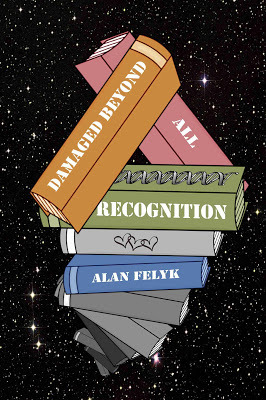
29. DID YOU EVER THINK OF QUITTING?
No, never. My problem before I published my first book in 2012 was STARTING. I wish I had made creative writing my top priority in the 1970s.
30. WHAT WAS YOUR FAVOURITE MANUSCRIPT TO WRITE? WHY?
Undoubtedly it was Damaged Beyond All Recognition. Yes, Damaged Right Out Of The Box was fun to write, but it posed less of a challenge. I was writing my memoirs—true stories that needed organization and presentation. The novel, by contrast, was a blank computer screen that required my imagination to run wild. And there is no better feeling than coming up with a plot wrinkle that seems like genius at 2 o’clock in the morning.
31. HOW WOULD YOU DEFINE ‘SUCCESS’ AS A WRITER?
We put way too much emphasis on book sales. Twitter must have one-hundred thousand bios that contain the phrase “best-selling author.” Trust me—your Amazon sales rank will betray you when a potential reader goes to your site. My novel has bounced in and out of Amazon’s best seller list in humorous science fiction. That means it’s been among the top one hundred of that subcategory. But I’m not calling it a best seller unless it sticks in that category for much longer than a day or two.
It’s fun to see your book ahead of something written by Vonnegut or Douglas Adams at a particular moment in time because you sold a few more books than they did in any given hour. But then things go dry for the next few days, and you slide off . Hahaha.
I define writing success in two ways. First, are you satisfied with it? When I finished Damaged Beyond All Recognition, I knew I had a quality book. In fact, I worry that I may never write a novel as good as this one. It is all that I wanted it to be. But the main driver is reader reaction. How strong is the love for your book? Have you touched somebody in the way that you wanted? If so, it’s a success. Don’t fret about book ranking validation. It’s not your fault that millions of people don’t know it’s there and how good it is.
32. WHAT SHOULD READERS WALK AWAY FROM YOUR BOOKS KNOWING? HOW SHOULD THEY FEEL?
I wanted to write a book that would make readers laugh, cry, and think. I think most people who have read Damaged Beyond All Recognition would say that it does those three things. If that’s how most readers react to it, then I say “mission accomplished.”
33. WOULD YOU LIKE TO HAVE YOUR BOOKS MADE INTO MOVIES? EVER WRITTEN A SCREENPLAY?
When I was finishing my novel, my girlfriend at the time thought that Damaged Beyond All Recognition would make a great movie. I have doubts about that. I think it lacks the action that people demand nowadays. If you expect them to sit through a science fiction movie, you better be blowing up things and having aliens trying to take over your world.
The Sirens of Titan by Vonnegut is a wonderful science fiction book, yet nobody has figured out how to bring it to the screen, be it small or large. Every few years, we hear that someone is going to tackle the project. And it never happens.
34. HOW MUCH THOUGHT GOES INTO DESIGNING A BOOK COVER?
If I were to base that answer on Damaged Beyond All Recognition, I would say about fifteen minutes. As I mentioned earlier, Cindy Swanson did the cover. I had no idea what to put on the cover because the novel is hard to define. People say you need an elevator speech that adequately describes what the book is about. If anybody has one after reading it, please send it to me.
But I digress. I called Cindy one evening as I was finishing the book, and I told her I had no damn idea what we should put on the cover. So we talked about the concepts in the book, and then we typed those things in Google search to see what images came up for each element. And then Cindy’s mind went into overdrive. A collection of books represented God’s library. The eternal love triangle provided a geometric design as well as the three interlocking hearts. The star field depicted the vastness of the Universe. The twisting of the books indicated infinity. The DNA symbol indicated the storyline’s problem.
Cindy said, “Well, let me play with it tonight and see what I come up with.”It’s probably what Van Gogh said before he painted one of his masterpieces. In the morning, the finished product was in my email box. I still can’t believe she pulled it off in a few hours.
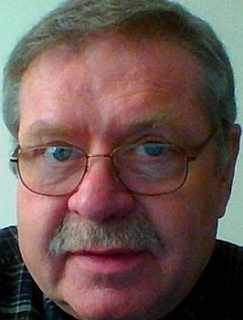
35. WHAT’S YOUR ULTIMATE DREAM?
I really think I’m living it right now. I can’t think of anything I’d rather be doing that writing the books that I’m working on right now. Sure, getting more readers is always a goal—if you have one hundred readers, you want one thousand readers, then one million readers.
36. WRITING IS ONE THING. WHAT ABOUT MARKETING YOU, YOUR BOOKS AND YOUR BRAND? ANY THOUGHTS?
I have said that it’s probably easier to write a bestseller than it is to convince the masses that it should be a bestseller. Marketing for a self-published author is like pushing the rock uphill an inch at a time. If you stop putting a shoulder behind it, the rock will waste no time in rolling to the bottom.
37. ARE YOUR BOOKS SELF-PUBLISHED?
Yes, all of them are, and I suspect that will continue to be the case. I plan to write a mock self-help book that I might shop to literary agents. It just depends.
38. DESCRIBE YOURSELF IN FIVE WORDS.
Honest, loyal, committed, nonjudgmental, resilient.
39. WHAT PISSES YOU OFF MOST?
You mean besides nails that bend when I hit them with a hammer? Or when I try to open something packaged in plastic? Or when Microsoft Windows keeps filling my computer’s memory until the machine crashes?
Yeah, I get ticked off by the “little things.” Don’t know why, but I think it’s because I’m fairly calm about everything else.
On the larger scale, I get extremely pissed when someone I trust lies to me. And I get doubly pissed when they refuse to admit they lied even though it’s obvious that they have. That has killed some close relationships in my life. I have booted a bunch of people out of my life for doing it. The ridiculous thing is that those relationships could still be salvaged if people would finally come clean and admit they lied. That’s it. You can patch things up in life, but you can’t do it if there’s still no honesty.
40. WHAT IS THE TITLE OF THE LAST BOOK YOU READ? GOOD ONE?
I recently read Secondhand Souls by Christopher Moore. It’s the sequel to A Dirty Job. I certainly would recommend it to folks who love fantasy and humor.
41. WHAT WOULD BE THE VERY LAST SENTENCE YOU’D WRITE?
I hope there’s love, writing, and music wherever I’m going.

42. WHAT WOULD MAKE YOU HAPPIER THAN YOU ARE NOW? CARE TO SHARE?
Ah, that’s a tough question when you’re twenty and an easy question when you’re sixty-seven.
Some of my friends keep asking, “Where’s the woman in your life?” And I say, “I finally figured out that I don’t want one after all.”
I spent most of my adult life in marriages. The first one lasted twenty years, the second fifteen. I had several relationships after the second divorce, and they didn’t work out. Don’t get me wrong—the women were all great people. But we didn’t mesh in a way that would sustain something long-lasting.
I then tried online dating, but I started to realize that I had become too selfish to have a meaningful relationship. When the date across from me talked about herself, I had images jump into my mind. Making trips across the country to visit all her children. Pushing the computer away to walk her dog when she was away. Agreeing to watching the Food Channel or a reality show instead of the Denver Broncos or a science fiction movie. Turning down the music at one o’clock in the morning while I’m writing so someone else can sleep.
Now, before I’m condemned for being a jerk, let me say this: For decades I did all these things and more for my partners. And I did them cheerfully. But I also sacrificed things like embarking on a creative writing career because other things came first. Writing just isn’t going to take a backseat to anybody at this point in my life.
I guess all I can say about being happier is that I hope my mind is the last thing to go. I want to keep writing to the very end, and I hope that I can finish the Infinity’s Trinity series and a bunch of books after that.
43. ANYTHING YOU’D LIKE TO ADD?
I really hope that the people who read this interview take the time to at least check out Damaged Beyond All Recognition. I encourage folks to go its Amazon page, click on the Look Inside feature, and read the first four chapters that are available. If the novel doesn’t interest you after that, peace. As an author, that’s all I can expect from potential readers.

WEBSITE
AMAZON
BOOK TRAILER

Clancy's comment: Many thanks, Alan. I do like your answer to question 28. Good luck with your book sales. Keep writing.I'm ...


Published on August 30, 2018 15:41
August 29, 2018
30 August 2018 - AMAZING FACTS ABOUT EARTHWORMS

AMAZING FACTS ABOUT EARTHWORMS
G'day folks,
Earthworms are hermaphrodites. Each has both male and female sex organs, but they cannot fertilize themselves. Earthworms spend most of their lives underground, creating complex burrow networks. They make an essential contribution to soil fertility and are therefore very important in gardens and of farm land.



SOME FACTS
There are thought to be 4,400 species of earthworm!As the earthworm spends most of its life underground, ploughing through the soil and creating complex burrow networks (that may extend 2m or more beneath the surface), their bodies are basically like a tube of muscle arranged in two layers. One set of fibres run lengthways and another run widthways like a corset around its body. Tightening the ‘corset’ forces the worm’s head forward. A wave of contractions then passes back down the body, squeezing more of the worm forward until the long muscles take over to pull up the tail.Earthworms have tiny retractile bristles along the body which help give it grip and a slippery mucus covering, allowing the worm to move through even the hardest earth.The thin-skinned earthworm has no resistance to the sun’s ultra-violet radiation, so daylight can be fatal and they will usually only be found on the surface in dull, wet weather.Earthworms will anchor their tail in its burrow and at any sudden noise it will slither back into the earth.Earthworms are hermaphrodites. Each has both male and female sex organs. However, they cannot fertilize themselves. They need to mate with another worm in order to exchange genetic material.Earthworms are attracted to one another by scent. Their mating ritual involves the two worms lying head-to-tail on the surface of the soil and exchange sperm while bound together in a mucus covering.Earthworms can contain up to 20 eggs which are sealed up to form a cocoon and which can survive extreme weathers, but usually only one worm emerges from it.If an earthworm loses one end of its body it may grow a replacement, however, if it is cut in half, it dies. Contrary to common belief, they do not become two new worms.Some gardeners poison earthworms to eliminate worm-casts (droppings). This damages the lawn and animals and birds preying on the worm more than it damages the earthworm population.Fossilized worms, similar to earthworms, have been found in rocks laid down 600 million years ago.

Are earthworms important?
Yes! The earthworm is such a familiar creature that it is rarely given a second thought, yet its contribution to soil fertility is enormous. They tunnel through the ground, eating their way through the soil. They also drag leaves and other plant debris down into the soil, which allows air to enter it and water to drain through. Their activities over millions of years have been vital in creating rich, fertile soils from dense, infertile clays.Many animals get their food from the soil, but the earthworm eats the soil itself. It crunches it up in its muscular stomach, digests what it can (the organic material that is mixed with the mineral fragments) and ejects the rest.Earthworms cast from one square metre of meadow were weighed over the course of one year. It emerged that the worms brought about 8kg of soil to the surface annually.Unfortunately for the earthworm, it falls prey to just about most animals and birds, but the mole is its greatest threat as one mole can eat up to 50 earthworms in one day and they consume more in the winter.
 Clancy's comment: And, they are great bait for fishing, and wonderful for your garden.I'm ...
Clancy's comment: And, they are great bait for fishing, and wonderful for your garden.I'm ...
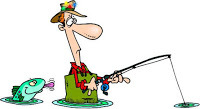

Published on August 29, 2018 15:36
August 28, 2018
29 August 2018 - SOME FACTS ABOUT ELVIS PRESLEY
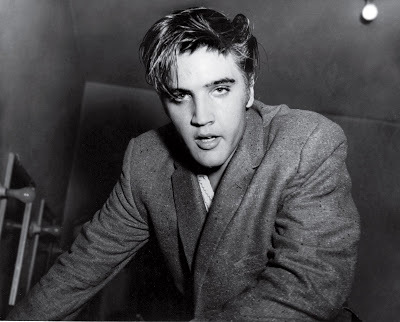
SOME FACTS ABOUT ELVIS PRESLEY
G'day folks,
Elvis Aaron Presley was an American singer and actor. Regarded as one of the most significant cultural icons of the 20th century, he is often referred to as the "King of Rock and Roll" or simply "the King".
Elvis Presley became one of the most influential cultural icons of a generation. He is commonly referred to as the “The King of Rock ‘n’ Roll” and epitomises the post-war pop generation.
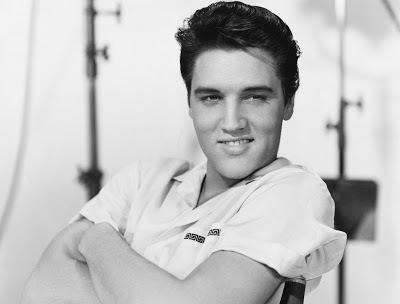
Elvis was born in Tupelo, Mississippi. When he was 13, his family moved to Memphis, Tennessee. Elvis was relatively shy and as a youngster was not keen on performing in public. However, he received a guitar as a present and learnt to play and sing; he gained no formal musical training, but had an innate natural talent and could easily pick up music. As a teenager, he was uninterested in school – but become absorbed in music, listening to a huge range of contemporary American music. He also started to sport a distinctive look with sideburns and styled hair. This image would later become an ‘Elvis’ trademark.
In 1953, he went to Sun recording studio – to record a song for his mother, but also with the hope he may get noticed and offered a recording deal. However, it didn’t come to anything; he was also turned down for auditions to other groups. In April 1954, he took a job as a truck driver.
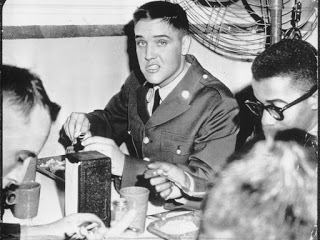
However, later on in the year, the Sun boss Sam Phillips invited Elvis to come in for a recording session. Initially, the recording session was unpromising, but towards the end of the allotted time, Elvis started to play a song he had composed himself. Phillips was immediately impressed by the verve, enthusiasm and dynamism of Elvis’s music. Phillips believed that Elvis had a unique voice and talent which could capture the interest of Americans.
For his first studio recording, Elvis performed the 1946 blues number, Arthur Crudup’s “That’s All Right”; it was well received on local radio stations. This initial success launched Presley into a lucrative pop music career.

In January 1956, Presley was signed by RCA Records. His first single, “Heartbreak Hotel“, was released in January and became a best-selling hit – staying at number one for seven weeks, and selling over one million copies.
His performances were a fusion of country, gospel, pop and rhythm and blues. His unique gravelly voice gave the impression Presley combined both ‘black’ and ‘white’ sounds, something which was an issue during an era of tense civil rights campaigns. Elvis’s on stage routines were also criticised for their flamboyance and provocativeness; he was criticised for the idea that rock ‘n ‘roll music was having a negative effect on American teenagers, making them more rebellious. As the leading figure of pop music, Presley was often the target of these criticisms.
However, if Presley was considered a controversial and a rebellious figure, it just made him more popular with young listeners. His catapult to stardom was helped by a rivalry between TV presenters, such as Steve Allen and Ed Sullivan. Elvis proved a star attraction on tv talk shows, and the competition between presenters helped to make Elvis a national celebrity. It also helped bring rock ‘n’ roll into the mainstream. John Lennon, of the Beatles, described the effect that Elvis had on his musical development.
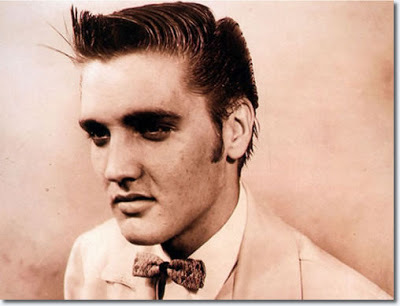
Ironically, Elvis was never keen to meet the Beatles and when they did meet on one occasion – 27 August 1965 – it was a mutual disappointment. But, Lennon always maintained without Elvis, there would have been no Beatles.
At live concerts, his crowds increasingly became overly exuberant. When Presley began playing hits like “You ain’t nothin’ but a Hound Dog” the crowd would go wild. This led Presley to take a break from live performances.
In 1958-60, Presley was called up for national service in the American army. He was stationed in Germany and served in the regular army, and was keen to be seen as an ordinary soldier doing his duty. He could have signed up for Special Services, which would have enabled him to perform live music, but he preferred to stay in the regular army. During his stay in Freiburg, Germany he met Priscilla Beaulieu, who he would marry after a seven-year courtship. They married in 1967 and, in 1968, Priscilla gave birth to Elvis’s only child – Lisa Marie.
After the stint in the army, he began to focus more on movies. Presley made several movies in the 1960s. These were generally received with low critical acclaim, though they were quite popular and commercially successful. By the end of the 1960s, Presley’s career was in decline. He had become known for formulaic films and uninspiring soundtracks. He was increasingly unhappy with the direction of his career. In 1967, Presley made a comeback as a singer, but his first eight singles were mostly flops and failed to make an impression on the pop charts. The exception was the 1969 single “If I Can Dream”, which helped to reinvigorate Presley’s musical creativity. In 1970, he released “The Wonder of You” which topped the charts in the UK and US. He also began a new music tour, which sold out to record-breaking crowds.
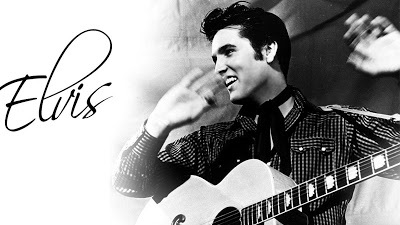
However, from 1973, Presley began to increasingly suffer health problems – related to his obesity and drug dependency. He continued to try and maintain a hectic touring schedule, but his performances were negatively affected by his obvious health problems. In 1976, aged only 42, he died from multiple causes; fourteen different drugs were found in his bloodstream.
His early death only cemented his legendary status, and Elvis Presley has become deeply ingrained in popular culture.
Presley’s home Graceland was opened to the public in the 1980s and attracts over half a million visitors annually. It was declared a National Historic Landmark in 2006.
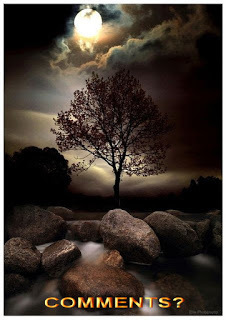
Clancy's comment: Elvis has left the building.
I'm ...


Published on August 28, 2018 17:23
August 27, 2018
28 August 2018 - WEIRD AND WONDERFUL STUFF

WEIRD
AND
WONDERFUL STUFF
G'day folks,
Welcome to some more of those weird and wonderful snapshots.



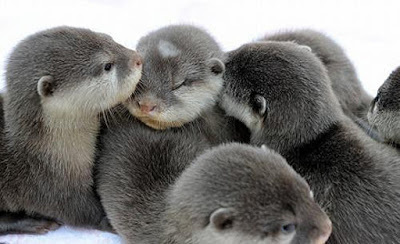




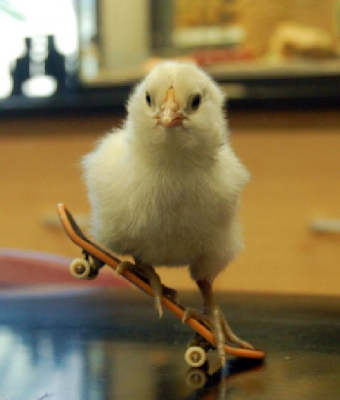


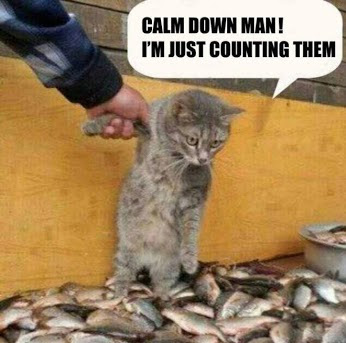

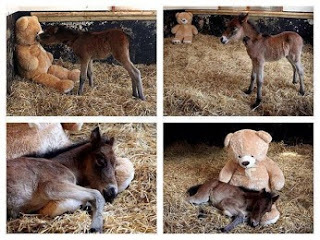


Clancy's comment: Still, my favourite subject to photograph are kids. They are so natural and unpredictable. Love the last shot. It's one of my all time faves.
I'm ...


Published on August 27, 2018 14:27
August 26, 2018
27 August 2018 - GREAT ARTISTIC FIND IN JUNK SHOP
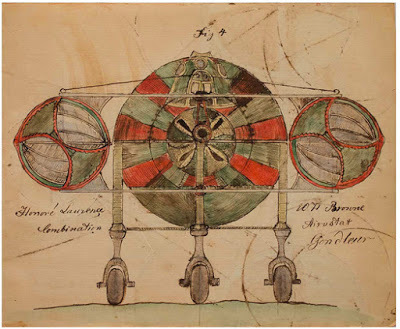
GREAT ARTISTIC FIND IN JUNK SHOP
G'day folks,
This post might inspire you junk shop visitors.
H is story is one shrouded in mystery, almost lost forever, intertwined with secret societies, hidden codes, otherworldly theories and seemingly impossible inventions before his time. Unseen for decades and salvaged by a junk dealer in the 1960s from a trash heap outside a house in Texas, his entire body of work would later go on to marvel the intellectual world. But during his lifetime, Charles Dellschau had only been known as the grouchy local butcher.
In 1969, used furniture dealer Fred Washington bought 12 large discarded notebooks from a garbage collector, where they found a new home in his warehouse under a pile of dusty carpets. In 1969, art history student, Mary Jane Victor, was scouring through his bazaar of castaways when she came upon the mysterious works of a certain Charles Dellschau.
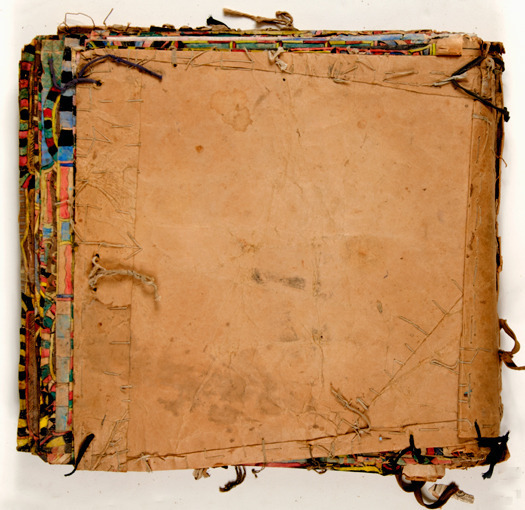
Inside the scrapbooks she discovered a remarkable collection of strange watercolours and collage pieces. More than 2,500 intricate drawings of flying machines alongside cryptic newspaper clippings filled the pages, crudely sewn together with shoelaces and thread.
Victor immediately notified the Art Director of Rice University, Dominique de Menil, Houston’s leading fine art patron, who snapped up four of the books for $1,500 and promptly put on an exhibition at the university entitled, “Flight”. Charles Dellschau, a Prussian immigrant had finally been discovered, nearly 50 years after his death in 1923.
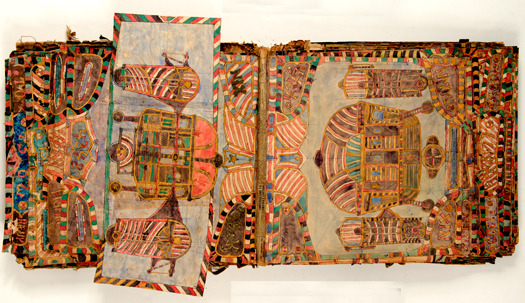
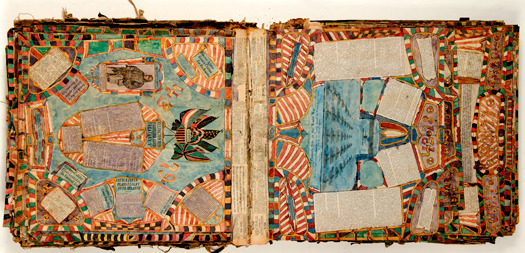
He had arrived in the United States at 25 years old from Hamburg in 1853 and documents show he lived in both California and Texas with his family, working as a butcher. After his retirement in 1899, he took to filling his days by filling notebooks with a visual journal of his youth. He called the first three books, Recollectionsand recounts a secret society of flight enthusiasts which met in California in the mid-19th century called the ‘Sonora Aero Club’.
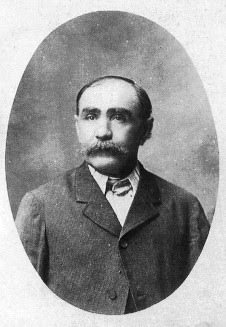
The Wright Brothers wouldn’t even make their famous first flight until 1903, but Dellschau draws dapperly-dressed men piloting brightly-coloured airships and helicopters with revolving generators and retractable landing gear. No records have ever been found of the Sonora Aero Club but Dellschau’s artworks hide a secret coded story. Whatever it was that he had to say was apparently too private even for his own notebooks and even today, much of the mystery has yet to be revealed.
A Mr. Pete Navarro, graphic artist and UFO researcher, heard about the “Flight” exhibition in 1969 and became enthralled. He believed there was a connection between Dellschau’s drawings and mysterious mass of “airship” sightings at the turn of the century across 18 states from California to Indiana. In 1972, he discovered that 8 remaining books of Dellschau were still sitting at the junk shop, unwanted and unclaimed. He bought the lot for $565 and spent the next 15 years obsessively decoding Dellschau’s work.
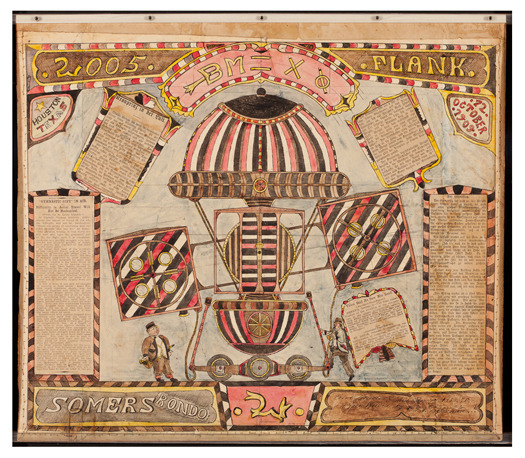
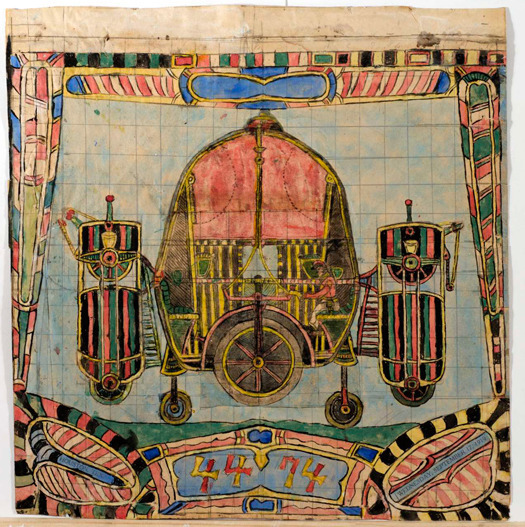
Dellschau never draws himself aboard the fantastical aero inventions and represent himself as the club’s scribe/ record-keeper, rather than as one of its inventors or pilots. There are as many as 100 designs for airships with names like the Aero Mary, the Aero Trump and even an “Aero Jourdan”. The club’s secret mission? To design and build the first navigable aircrafts using a secret formula he coded as “NB Gas” which could negate gravity and drive the ships wheels, side panels and compressor motors … all in a day’s work during an era when air travel was still viewed as a mystical impossibility.
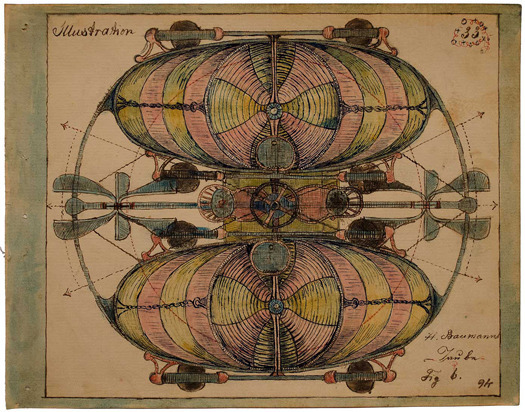
Some of his drawings tell of fatal crashes of the society’s airships, sabotage of other club members and the banning of members who talked about the secret organisation to outsiders. According to Dellschau, the club’s aero prototypes would travel the open roads disguised as gypsy wagons to avoid detection.In the notebooks’ strange code of germanic lettering, Pete Navarro found a phrase that translated as “NYMZA”. Dellschau reveals this to be an even larger secret society that allegedly controlled the Sonora Aero Club branch. Based on Navarro’s findings, UFO theorists have come up with some far-fetched speculation that the NYMZA was in fact an extra terrestrial entity.

While Navarro rubbished those claims, he did manage to find press clippings in Texas archives linking one of the names of Dellschau’s secret society members to an article published in 1897 about a local airship sighting. The San Antonio Daily Express article identified one of the airship’s mysterious occupants as Hiram Wilson, who according to witnesses, revealed that his airship design came from his uncle named Tosh Wilson, the very name Navarro had found mentioned in Dellschau’s watercolours as a Sonora club inventor.

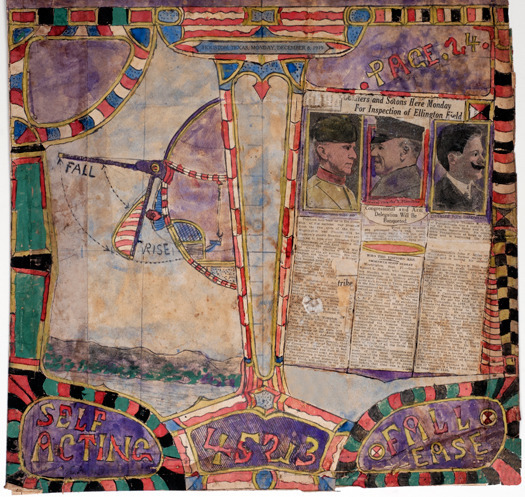

But even Navarro, despite his exhaustive research, had his doubts about Charles Dellschau’s story and how much of it was fiction. Were they tall tales to keep an old man entertained? Or were they true accounts of his youth, perhaps innocently exaggerated here and there?

Clancy's comment: Amazing, eh? Keep your eyes open next time you visit a junk shop.
I'm ...


Published on August 26, 2018 16:24
August 25, 2018
26 August 2018 - GREAT QUOTES

GREAT QUOTES
G'day folks,
Welcome to some more of those great quotes that I've collected over the years. Hope they inspire you to do something creative.


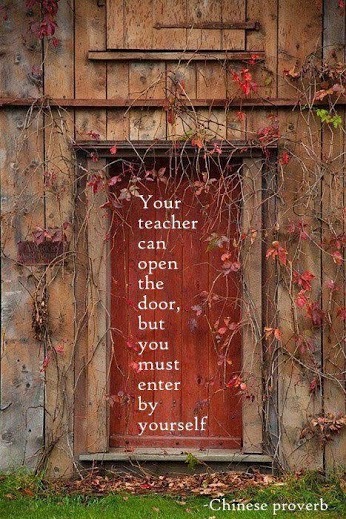


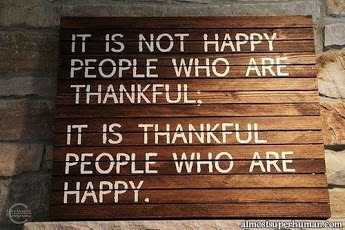

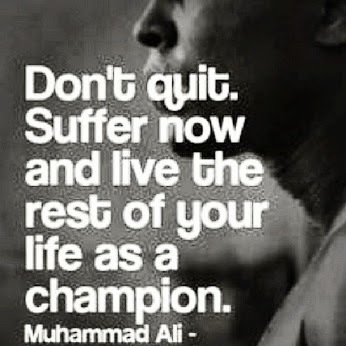
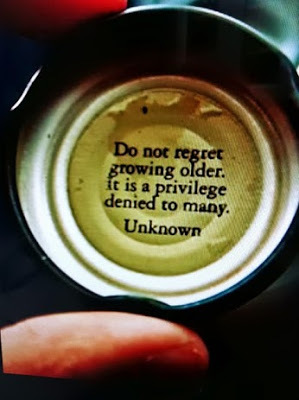


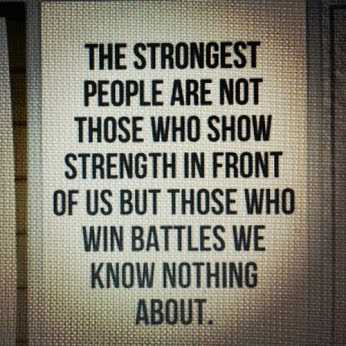
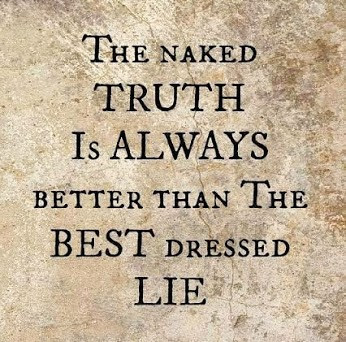
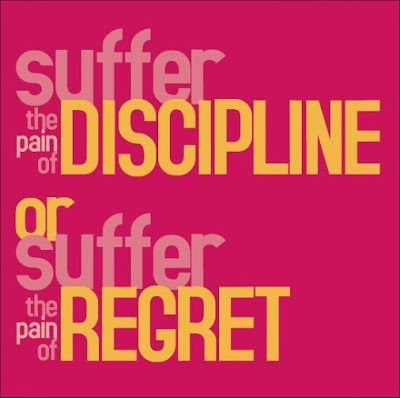


Clancy's comment: I hope you liked that brief recipe. Gotta keep your energy up.
I'm ...
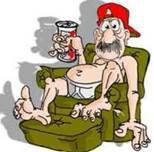

Published on August 25, 2018 15:37
August 24, 2018
25 August 2018 - FACTS ABOUT THE AUSTRALIAN DINGO

FACTS ABOUT THE AUSTRALIAN DINGO
G'day folks,
The dingo is a type of feral dog native to Australia, yet its taxonomic status is debated. The first British colonists to arrive established a settlement at Port Jackson in 1788 and recorded dingoes living there with indigenous Australians.
Facts ...
Originally a domestic dog thought to have been brought to Australia by the Aborigines’.Though studies show it was more feasible that dingoes arrived over land bridges that existed than by being introduced by humans over the sea.The dingo is a tireless hunter and will cross large expanses of desert and open bush in search of its prey. Similar to the domestic dog, in particular the German Shepherd, their coat is usually reddish-brown with irregular white markings, although the colouring varies across its range. The colour of a dingo can determine where it is from, for example, dark brown coats derive from forested area and a more typical tan colour is associated with arid land. It has a long pointed muzzle and a mouth containing large molars and long canine teeth. Their ears are quite large, pointed and permanently erect. Their tails are bushy and have a distinctive white tip.The female obtains some of the moisture she needs to produce milk for her puppies by eating their droppings.A young male dingo can forage over as wide an area as 60km in a night and may join a local pack when food is abundant, but when it is scarce the pack drives any newcomer away.Dingoes hunt mainly at night and when in a pack they will target and kill large animals, such as a kangaroo. When a pack kills more than its members can eat, they bury the remaining food, digging it up to eat later. They will also eat eggs, grubs and wildfowl when other prey is scarce.Similar to the fox, the dingo has traditionally been accused of preying on sheep. However, analysis of the stomach contents of dingoes from Western Australia has shown that sheep are not a significant part of its diet.When the first European settlers arrived in Australia, they claimed to have found Aborigine women suckling dingo pups.The early Aboriginals used tamed dingoes as living hot water bottles to keep them warm at night.


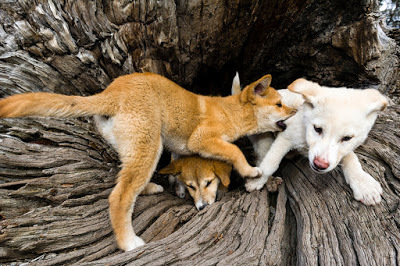
What is Dingo family life like?It was known that a female moved a litter of six pups individually over 9km in a single night, a total journey of 180km.The loose family group in which the dingo lives is kept within a core territory which it protects. Its total range, however, is far larger and often overlaps with that of other groups.Healthy adults take responsibility to keep old and weak animals away from food and water so that they quickly die.Both male and female dingoes take responsibility for rearing their young. The females will choose the same hidden, sheltered place each year to raise their young, provided it remains undisturbed. After the pups are born, the parents move downwind of their burrow so that they can watch for predators without drawing attention to the pups’ hiding place. Both parents will collect food for their pups, travelling long distances from the burrow and leaving potential prey nearby and untouched, so the pups can later learn to hunt it for themselves. Although fully weaned, a pup may still approach its mother for regurgitated foodYoung dingoes will fight aggressively in a bid to establish their place in the pecking order of the pack. However, their teamwork and stamina are the keys to hunting successfully as a pack.

Clancy's comment: I've seen many of them and have always been impressed by their clean coats.
I'm ...


Published on August 24, 2018 15:46
August 23, 2018
24 August 2018 - SPIRIT PHOTOGRAPHY
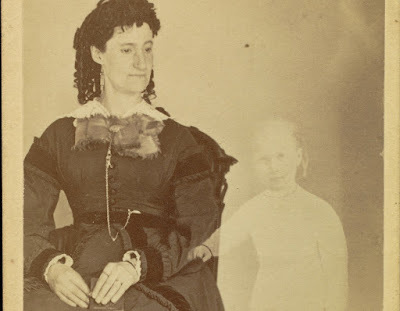
SPIRIT PHOTOGRAPHY
G'day folks,
Now, brace yourself. E ver since technology has allowed people to capture pictures, photographers have been using photo-editing techniques to trick people. One of the most fascinating early examples is spirit photography.
Spirit photography was a trend in which a photographer edited pictures to make ghosts or spirit-like figures appear alongside the human subjects. These pictures were often made using a double exposure technique, where one exposure is layered on top of another. Customers believed that the spirits of lost loved ones were communicating with them through these photographs.
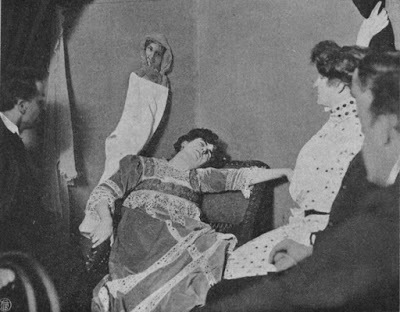
Communicating with the dead was important to Victorians because it seemed like death was all around them. In America, many lost people in the Civil War, and in other countries, mortality rates were generally high.
Diseases such as tuberculosis spread, and life for the growing urban working class was harsh in the pre-sanitary revolution era. The mid-to-late 1800s were also a time of rapid industrialization and progress, so connecting with the dead allowed people to feel tied to the past, and new religious movements incorporated spiritualism.
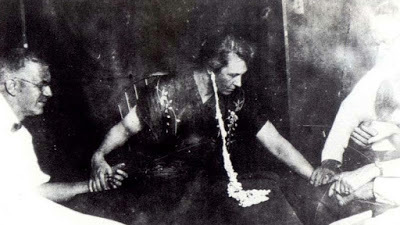
The first spirit photographer was William Mumler, who discovered a double exposure technique in the 1860s that made ghostlike figures appear in photographs. Mumler was a jewelry engraver and amateur photographer who was developing a self-portrait when he noticed an apparition that was supposedly his cousin who had died 12 years earlier.

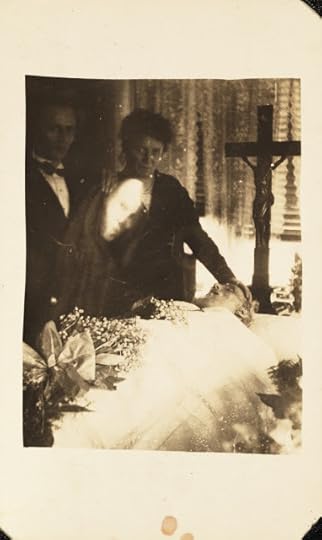

Becoming a full-time spirit photographer, Mumler conducted his business alongside his wife, a well-known healing medium. He would take pictures of people and then alter the negatives using other pictures to make “spirits” appear with the living subjects.
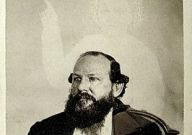
Mumler was eventually exposed as a fraud after living residents of Boston were identified as “spirits” in his pictures.
He was also accused of breaking into people’s houses to steal photos of the deceased to put into the pictures.


In 1869, Mumler was tried for fraud. One critic who testified against him was circus founder (and hoax promoter) P.T. Barnum, who argued that Mumler was taking advantage of people whose judgment was clouded by grief. In the end, there wasn’t enough evidence to convict Mumler, however, his career was ruined in the aftermath of the scandal.
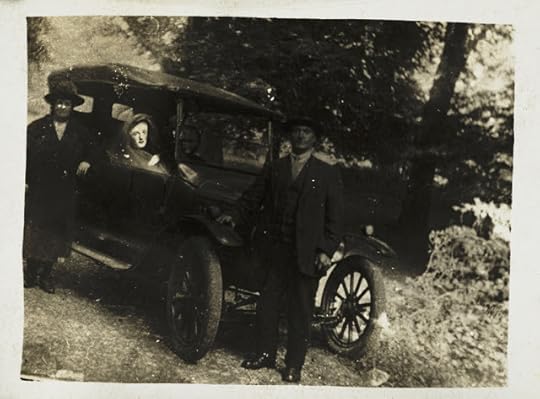

By the 1870s, spirit photography spread to Europe, where it took on an even more disturbing shape. Spirit photography was being endorsed by spiritual mediums, but also by some of society’s prominent scientists. Some claimed that spirits could take form through a substance called ectoplasm, a term that was coined by a Nobel prize-winning scientist no less, French physiologist, Charles Richet.

Clancy's comment: Morbid, eh? I guess you'd call this ghostography?
I'm ...


Published on August 23, 2018 16:01
August 22, 2018
23 August 2018 - MOTHER TERESA

MOTHER TERESA
G'day folks,
Welcome to the life of Mother Teresa.
Mother Teresa (1910–1997) was a Roman Catholic nun who devoted her life to serving the poor and destitute around the world. She spent many years in Calcutta, India where she founded the Missionaries of Charity, a religious congregation devoted to helping those in great need. In 1979, Mother Teresa was awarded the Nobel Peace Prize and became a symbol of charitable, selfless work. In 2016, Mother Teresa was canonised by the Roman Catholic Church as Saint Teresa.
Mother Teresa was born in 1910 in Skopje, the capital of the Republic of Macedonia. Little is known about her early life, but at a young age, she felt a calling to be a nun and serve through helping the poor. At the age of 18, she was given permission to join a group of nuns in Ireland. After a few months of training, with the Sisters of Loreto, she was then given permission to travel to India. She took her formal religious vows in 1931 and chose to be named after St Therese of Lisieux – the patron saint of missionaries.
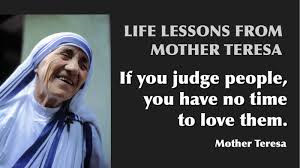
On her arrival in India, she began by working as a teacher; however, the widespread poverty of Calcutta made a deep impression on her, and this led to her starting a new order called “The Missionaries of Charity”. The primary objective of this mission was to look after people, who nobody else was prepared to look after. Mother Teresa felt that serving others was a fundamental principle of the teachings of Jesus Christ.
She experienced two particularly traumatic periods in Calcutta. The first was the Bengal famine of 1943 and the second was the Hindu/Muslim violence in 1946, before the partition of India. In 1948, she left the convent to live full-time among the poorest of Calcutta. She chose to wear a white Indian sari, with a blue border, out of respect for the traditional Indian dress. For many years, Mother Teresa and a small band of fellow nuns survived on minimal income and food, often having to beg for funds. But, slowly her efforts with the poorest were noted and appreciated by the local community and Indian politicians.
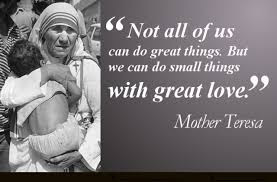
In 1952, she opened her first home for the dying, which allowed people to die with dignity. Mother Teresa often spent time with those who were dying. Some have criticised the lack of proper medical attention, and their refusal to give painkillers. Others say that it afforded many neglected people the opportunity to die knowing that someone cared.
Her work spread around the world. By 2013, there were 700 missions operating in over 130 countries. The scope of their work also expanded to include orphanages and hospices for those with terminal illnesses.

Mother Teresa never sought to convert those of another faith. Those in her hospices were given the religious rites appropriate to their faith. However, she had a very firm Catholic faith and took a strict line on abortion, the death penalty and divorce – even if her position was unpopular. Her whole life was influenced by her faith and religion, even though at times she confessed she didn’t feel the presence of God.
The Missionaries of Charity now has branches throughout the world including branches in the developed world where they work with the homeless and people affected by AIDS. In 1965, the organisation became an International Religious Family by a decree of Pope Paul VI.
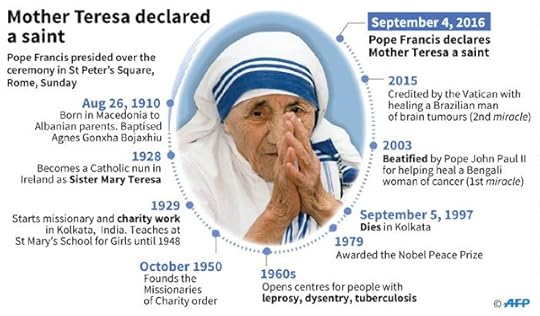
In the 1960s, the life of Mother Teresa was brought to a wider public attention by Malcolm Muggeridge who wrote a book and produced a documentary called “Something Beautiful for God”.
In 1979, she was awarded the Nobel Peace Prize “for work undertaken in the struggle to overcome poverty and distress, which also constitutes a threat to peace.” She didn’t attend the ceremonial banquet but asked that the $192,000 fund be given to the poor.
In later years, she was more active in western developed countries. She commented that though the West was materially prosperous, there was often a spiritual poverty.
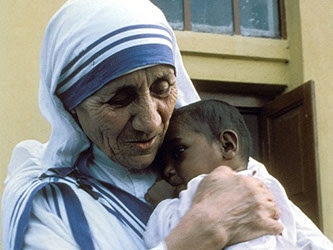
When she was asked how to promote world peace, she replied,”Go home and love your family”.
Over the last two decades of her life, Mother Teresa suffered various health problems, but nothing could dissuade her from fulfilling her mission of serving the poor and needy. Until her very last illness she was active in travelling around the world to the different branches of The Missionaries of Charity. During her last few years, she met Princess Diana in the Bronx, New York. The two died within a week of each other.
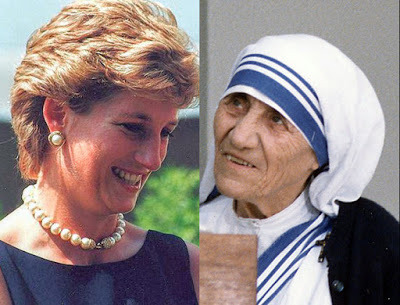
Following Mother Teresa’s death, the Vatican began the process of beatification, which is the second step on the way to canonization and sainthood.
Awards given to Mother TeresaThe first Pope John XXIII Peace Prize. (1971)Kennedy Prize (1971)The Nehru Prize –“for the promotion of international peace and understanding”(1972)Albert Schweitzer International Prize (1975),The Nobel Peace Prize (1979)States Presidential Medal of Freedom (1985)Congressional Gold Medal (1994)U Thant Peace Award 1994Honorary citizenship of the United States (November 16, 1996),

Clancy's comment: A selfless woman with massive vision.
I'm ...


R.I.P
Published on August 22, 2018 18:49



